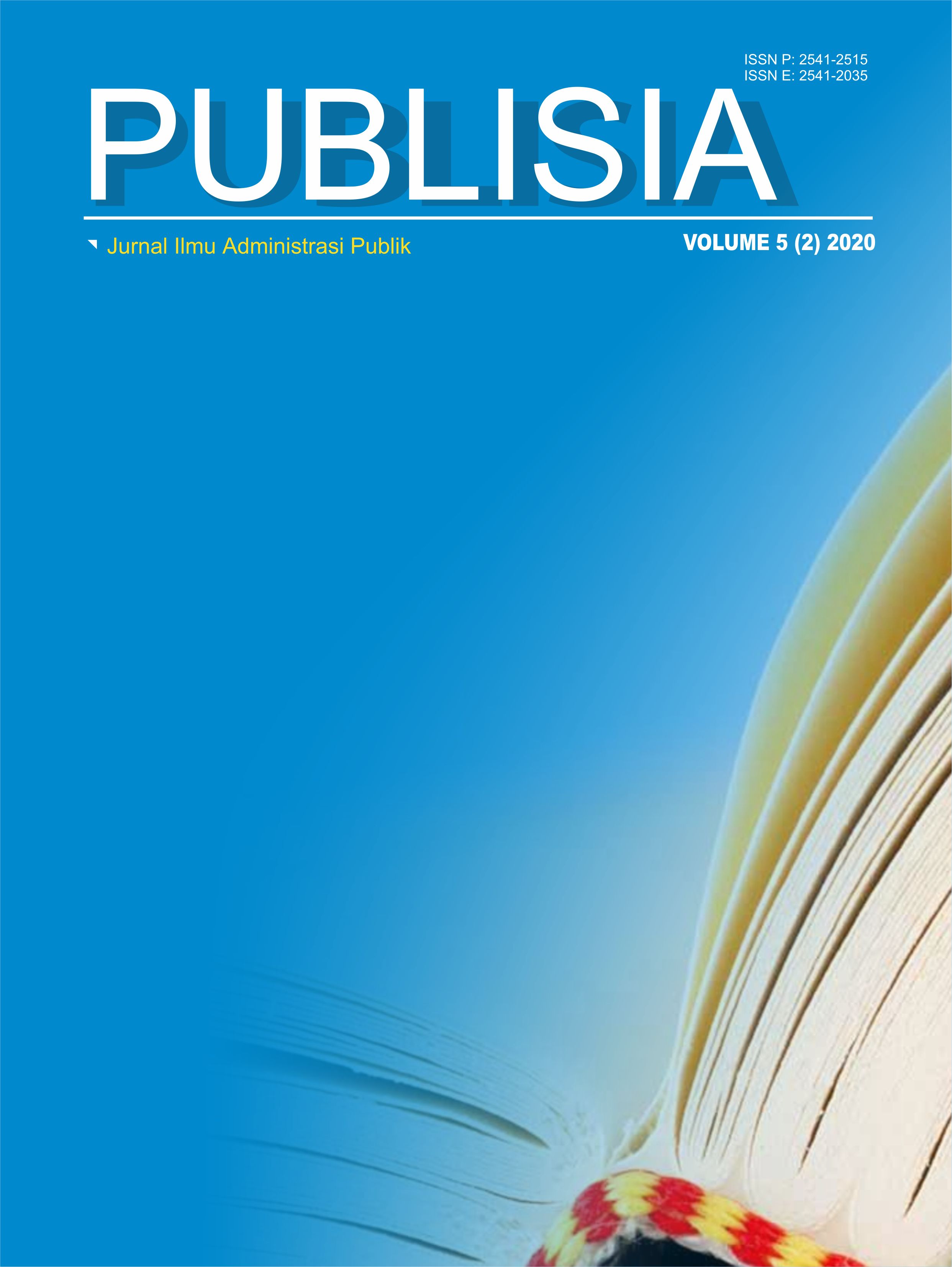Tata kelola inovasi pelayanan publik: dimensi kelembagaan, aktor kebijakan dan masyarakat
DOI:
https://doi.org/10.26905/pjiap.v5i2.4327Keywords:
Innovation Governance, the 6-in-1 Program, Population Affair ServicesAbstract
The goal of this research is to identify the innovation governance of 6-in-1 program in services for population affairs at the Autonomous Agency for Population Affairs and Civil Registry of Surabaya City Administration. Innovation of 6-in-1 program is an innovation containing the 6 products of population services (birth, death, moving, arriving, marriage, divorce). This research applies the Innovation Governance Theory from the United Nation, namely Institution, Policy Actor and Community in subsequent management, then elaborated by using the Theory of Cook and Mathews, namely Risk Management and Technology. This research applies “qualitative descriptive method‟ .The technique in determining the informant is classified into 2 (two) sample takings, the purposive sampling and the snowball sampling. Data are collected through observation interview, and documentation. The triangulation technique is used for verification or checking. Output of this research reveals that the innovation management must be supported by various aspects, such as the supporting policy, level of employees‟ compliance, community serving attitude, synergy among the stakeholders, culture, and community participation. However, there are still several things not yet been supportive, namely knowledge of the community, network technology and prevention managementDownloads
References
Anttiroiko, A.-V., Bailey, S. J., & Valkama, P. (2011). Innovations in Public Governance in the Western World. Amsterdam: IOS Press BV.
Creswell, W. (2013). RESEARCH DESIGN (Edisi 4). Jakarta: Administrasi Jakarta Pusat.
Damanpour, F., & Aravind, D. (2011). Managerial Innovation: Conceptions, Processes, and Antecedents. 8(2)(Management and Organization Review).
Dwiyanto, A. (2005). Mewujudkan Good Governance Melalui Pelayanan Publik. Yogjakarta: Gadjah Mada University Press.
Klareskov, V., & Nikolov, D. (2007). Innovations in Governance in the Middle East, North Africa, and Western Balkans: Making Governments Work Better in the Mediterranean Region. (Eleven Innovations in Governance in the Middle East, North Africa, and Western Balkans: A Synopsis. Innovation in Governance and Public Administration: Key Issues and Perspectives. In Department of Economic and Social Affairs (Eds.)), 41–52.
Madani, M. (2011). Dimensi interaksi aktor dalam proses perumusan kebijakan publik. Graha Ilmu.
Maruapey, M. H. (2019). Urgensi Tata Kelola Inovasi Perekaman Data dan Dokumen Kependudukan. 54–69.
Merrill, P. (2015). Innovation Never Stop: Innovation Generation the Culture, Process, and Strategy. Milwaukee: Quality Press.
Michels, A. (2012). Citizen Participation in Local Policy Making: Design and Democracy. International Journal of Public Administration, 33(4), 285–292. https://doi.org/10.1080/01900692.2012.66130 1
Nazir, M. (2010). Metode Penelitian. Bogor: Ghalia Indonesia.
Putri, A. A., Ariany, R., & Syamsurizaldi. (2019). Sistem Tata Kelola Pemerintahan Nagari dalam Menciptakan Public Value di Nagari Sungai Nyalo IV. 4(1), 102–116.
Scott, W. R. (n.d.). Institution and Organizations: Idea, Interest, and Identities. Thousand Oaks: SAGE Publications.
Thapa, et al. (2015). Citizen involvement in Public Sector Innovation: Government and Citizen Perspectives. Information Polity, 20(1), 3–17. https://doi.org/10.3233/IP-150351
Ulrich, K. (2011). Key Elements of Innovation. Retrieved from Think With Google.
United, N. (2015). Innovative Public Service Delivery: Learning from Best Practices. Report of the Ad Hoc Expert Group Meeting Innovating Public Service Delivery.
Downloads
Published
How to Cite
Issue
Section
License
Authors who publish with this journal agree to the following terms:
- Copyright of the published articles will be transferred to the journal as the publisher of the manuscripts. Therefore, the author confirms that the copyright has been managed by the journal.
- Publisher of Publisia: Jurnal Ilmu Administrasi Publik University of Merdeka Malang.
- The copyright follows Creative Commons Attribution and share a like License (CC BY SA): This license allows to Share and copy and redistribute the material in any medium or format, Adaptative remix, transform, and build upon the material, for any purpose, even commercially.







